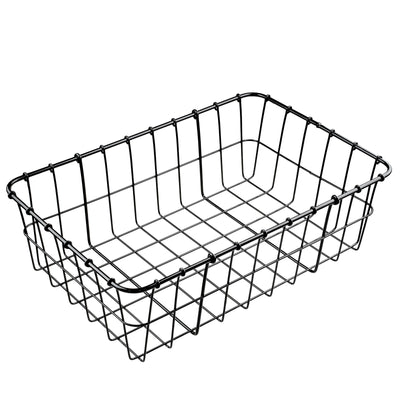Threaded Headset Basics
There are five fairly common threaded headset sizes: ISO, Italian, French, JIS, and BMX.
ISO is by far the most common size and is used on virtually every modern bike with a 1" steerer. The steerer inside diameter (ID) is 22.2mm. The pressed race ID is 30.2mm (that's the inside of the head tube). The crown race (on the fork) measures 26.4mm and the threading is 24tpi. Velo Orange stocks a high quality ISO 1" headset.
It's worth noting here that ISO, and most other, headsets use a keyed lock washer. A groove or keyway is machined into the steerer and the key in the washer fits into it. This is intended to prevent the top nut from loosening. But many custom bike builders don't machine a keyway. In this case simply throw away the washers and use a drop of Locktite on the top nut.
Italian headsets are virtually the same as ISO. The crown race ID is 26.5mm rather than 26.4mm and the threads are a tiny bit different, but ISO headsets are so close that they work absolutely perfectly on Italian frames.
French sized frames use a 25.0mm steerer with a 22.0mm ID. The crown race is 26.5mm and the pressed race is 30.2 mm. Thread pitch is 1mm, or 25.4tpi. The final difference is that the steerer has a flat machined onto the back rather than a keyway, so a different washer is used. French headsets are getting very hard to find, but VO has one readily available.
JIS headsets are used mostly on older Japanese frames and on Keirin racing frames. They differ from ISO headsets in having a 27.0mm crown race and 30.0mm pressed race. VO makes a JIS headset.
BMX-sized headsets were used on some older lower quality American and Japanese frames and on BMX bikes. The steerer ID is 21.15mm, the crown race is 26.4mm, and the pressed race is 32.6mm. This size is still made, but VO does not stock them.
There are also a few odd headset sizes including French tandem, Austrian, Raleigh, and 1/1-4" tandem. I don't have any experience with these and don't know of a source for replacements other than E-bay.
Stack Height
Stack height is the total height, or thickness, of the headset, not including the parts that fit into the head tube. In other words, it's the vertical distance required to fit the headset. Stack height is important because if it's greater than the available space on the fork the headset will not fit. This is rarely an issue on modern frames, but older frames often had their steerer tube lengths sized for a low-stack-height steel headset, so taller modern headsets might not fit. It pays to measure first. On a fork that has extra length, spacers are added to take up the excess.
If you're fitting a headset but find you lack just a millimeter or two of room, simply remove the lock washer and use a drop of Locktite on the top nut instead.
Loose Ball or Sealed Bearing
I am completely sold on sealed cartridge bearing headsets and they are the only type I will now install on my own bikes. The advantages of sealed bearings is that they last much longer, are smoother, are sealed against moisture, and require no maintenance. With the Grand Cru headset, which I use, the crown race is split so no tools are required to install or remove it. And if the bearings do someday wear out you simply lift out the two bearing cartridges and drop in new ones. (Note that some sealed bearing headsets have pressed in bearings and traditional crown races.)
This is not to say that loose ball headsets are bad. Cyclists have been using them for over a hundred years. If you ride mostly in nice weather and don't mind a bit of maintenance, they are a good way to save some money.
Roller bearing headsets also had a strong following, particularly the now discontinued Stronglight A9 headset. But with modern sealed bearing headsets available for the same price, I can see no reason to use a roller bearing headset. Some claim that roller bearing headsets reduce shimmy, but so do sealed bearing headsets.
Installing and Maintaining Headsets
Installing headsets is not difficult, but it does require some costly tools. So my recommendation is to pay the local bike mechanic to do it for you. It's only 10 or 15 minutes of work so it shouldn't cost much. For those of you who really want to do it yourselves, I'll simply point you to the Park Tools' excellent instructions.
That Park Tools article also explains how to disassemble the headset to grease or replace bearings, something that should be done a couple of times a year with loose ball headsets. It's an easy at-home job requiring only a headset wrench and some grease.
Hope this answers some questions!







Leave a comment